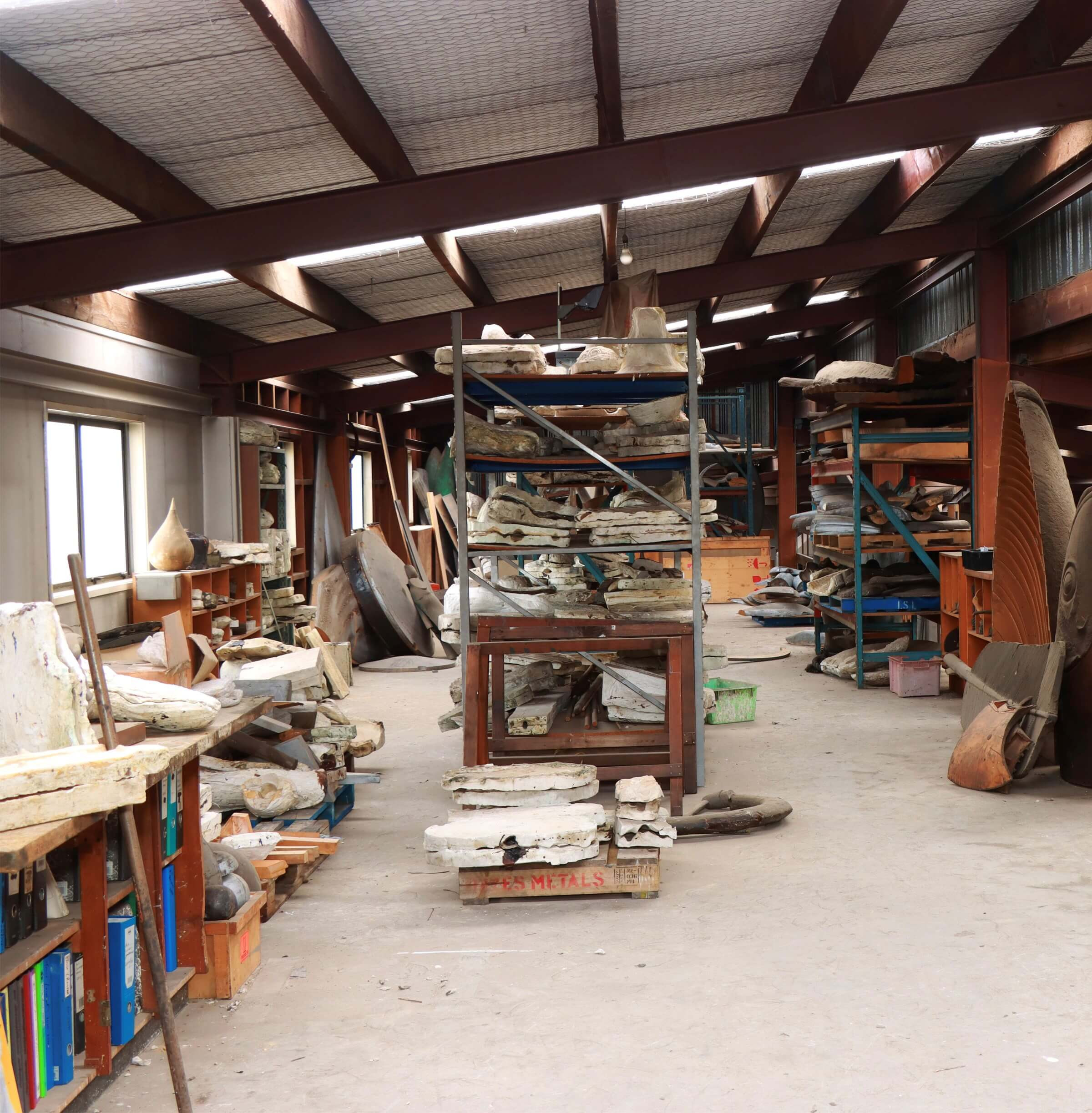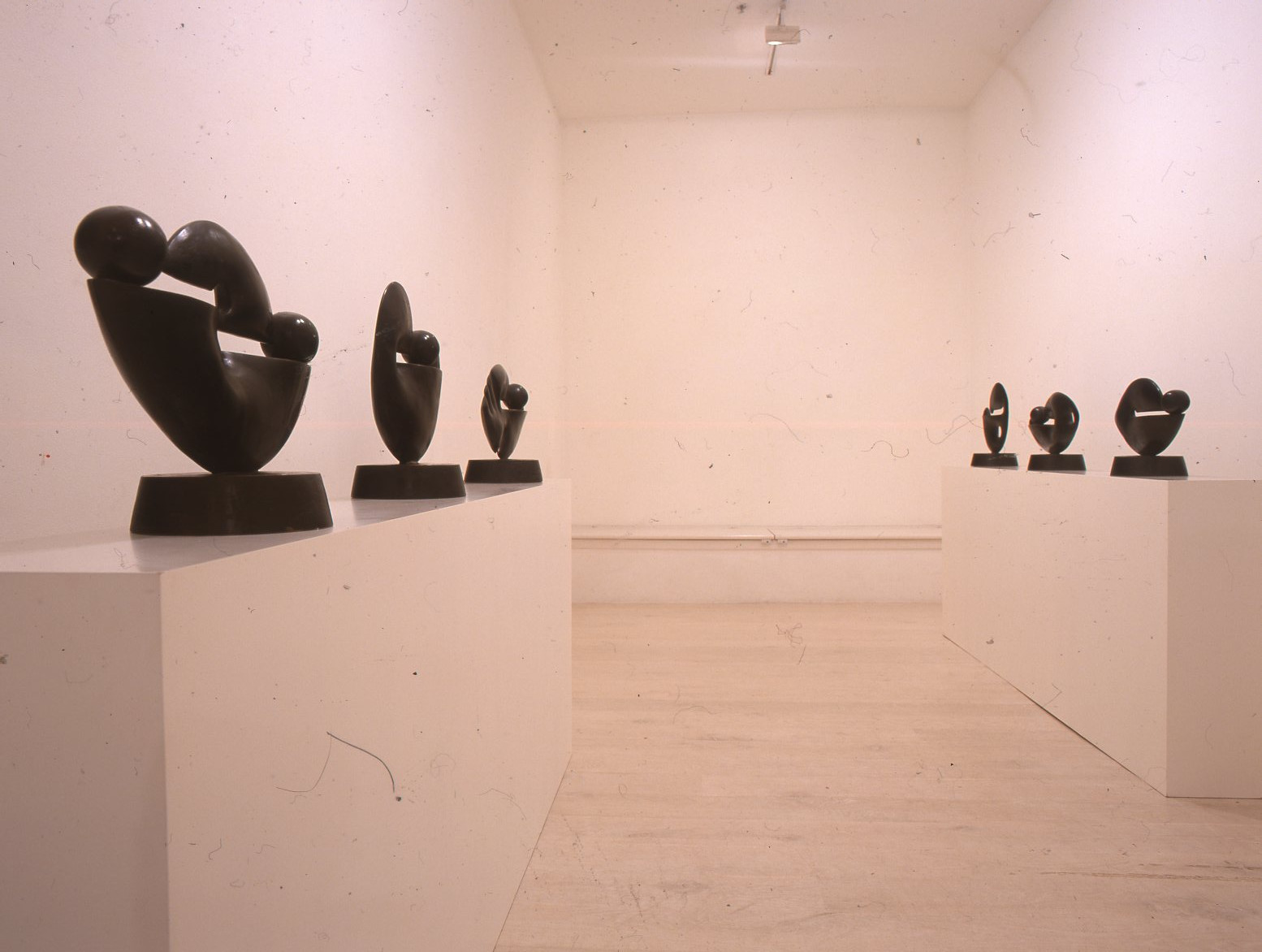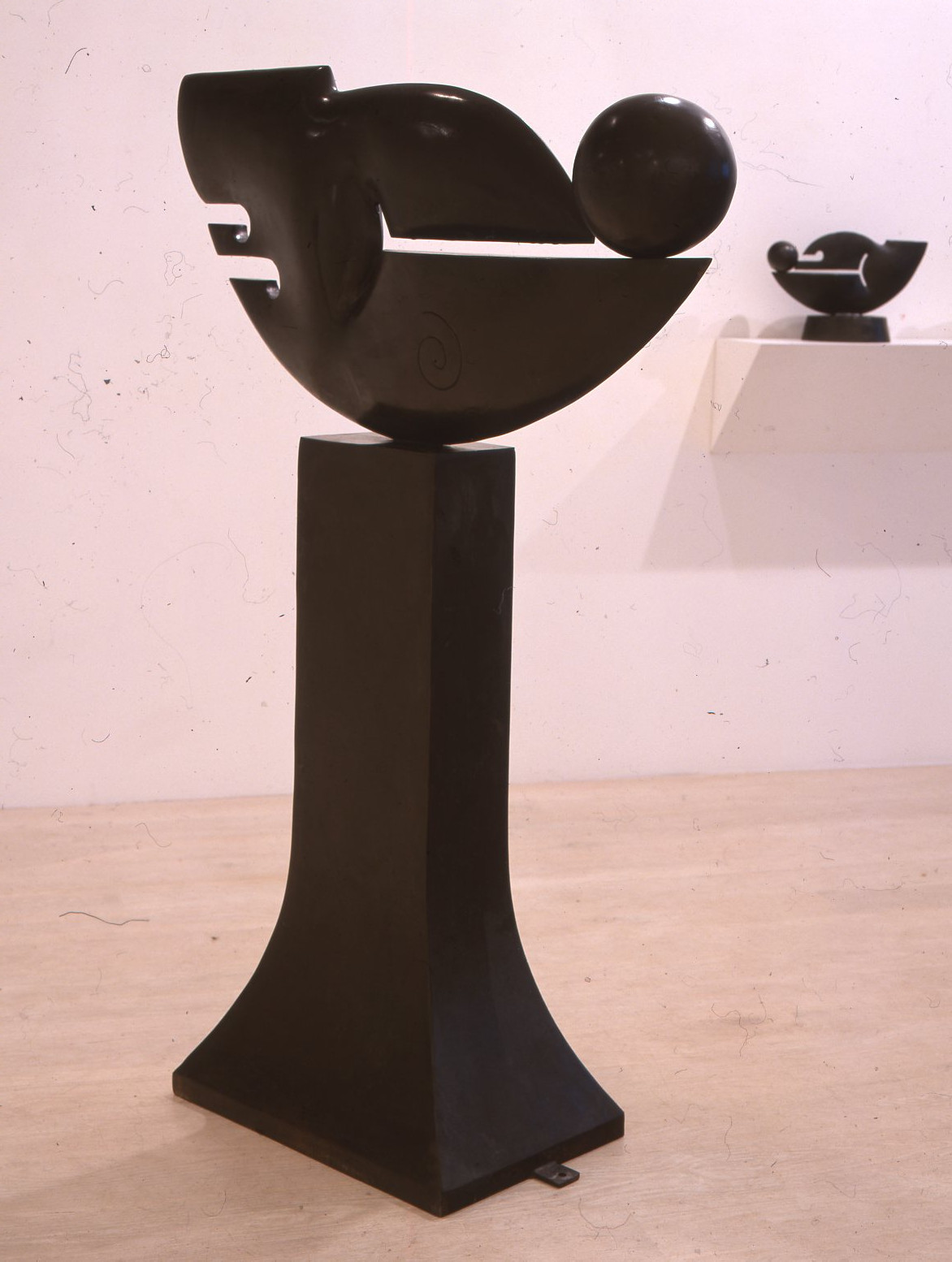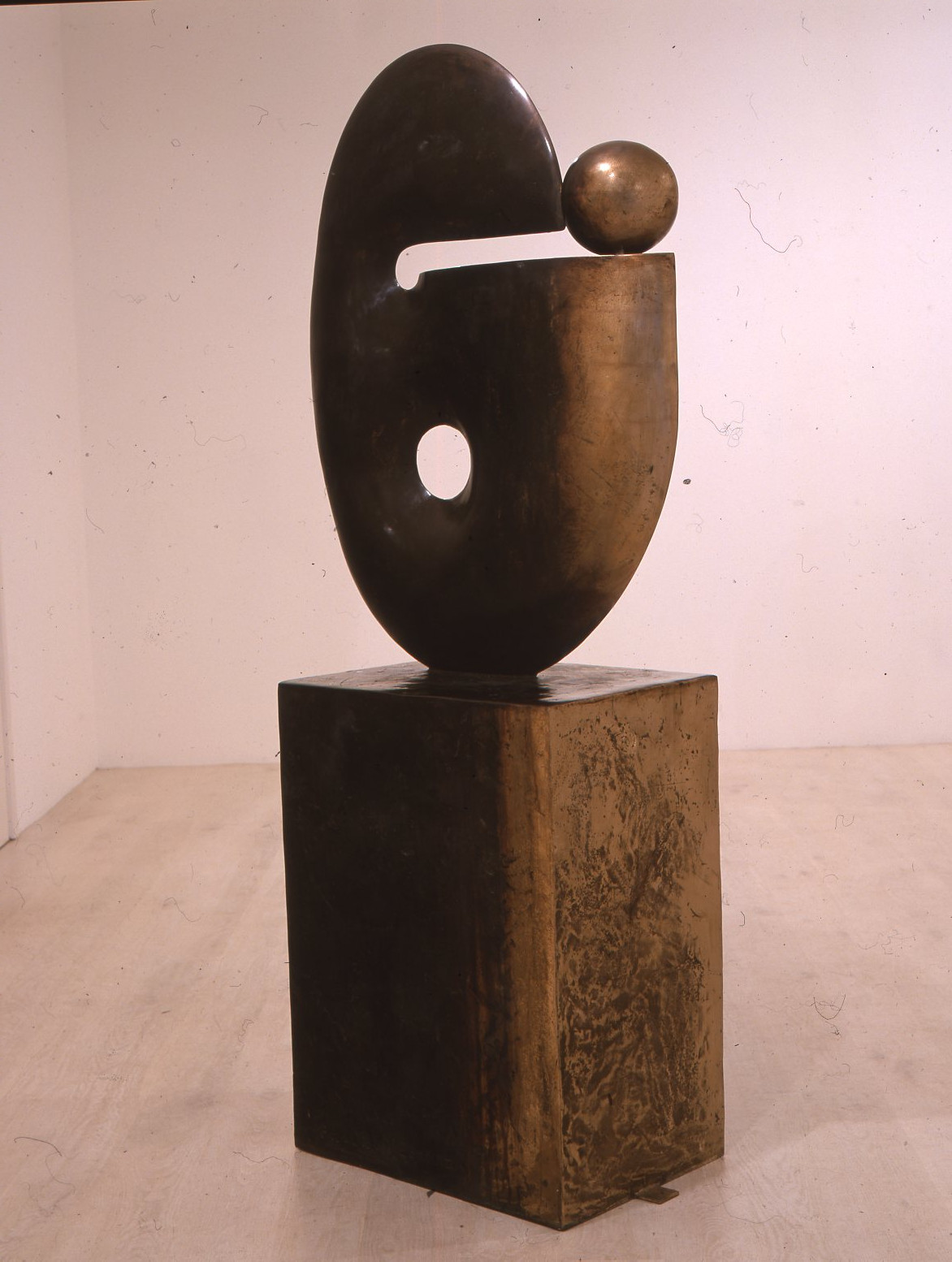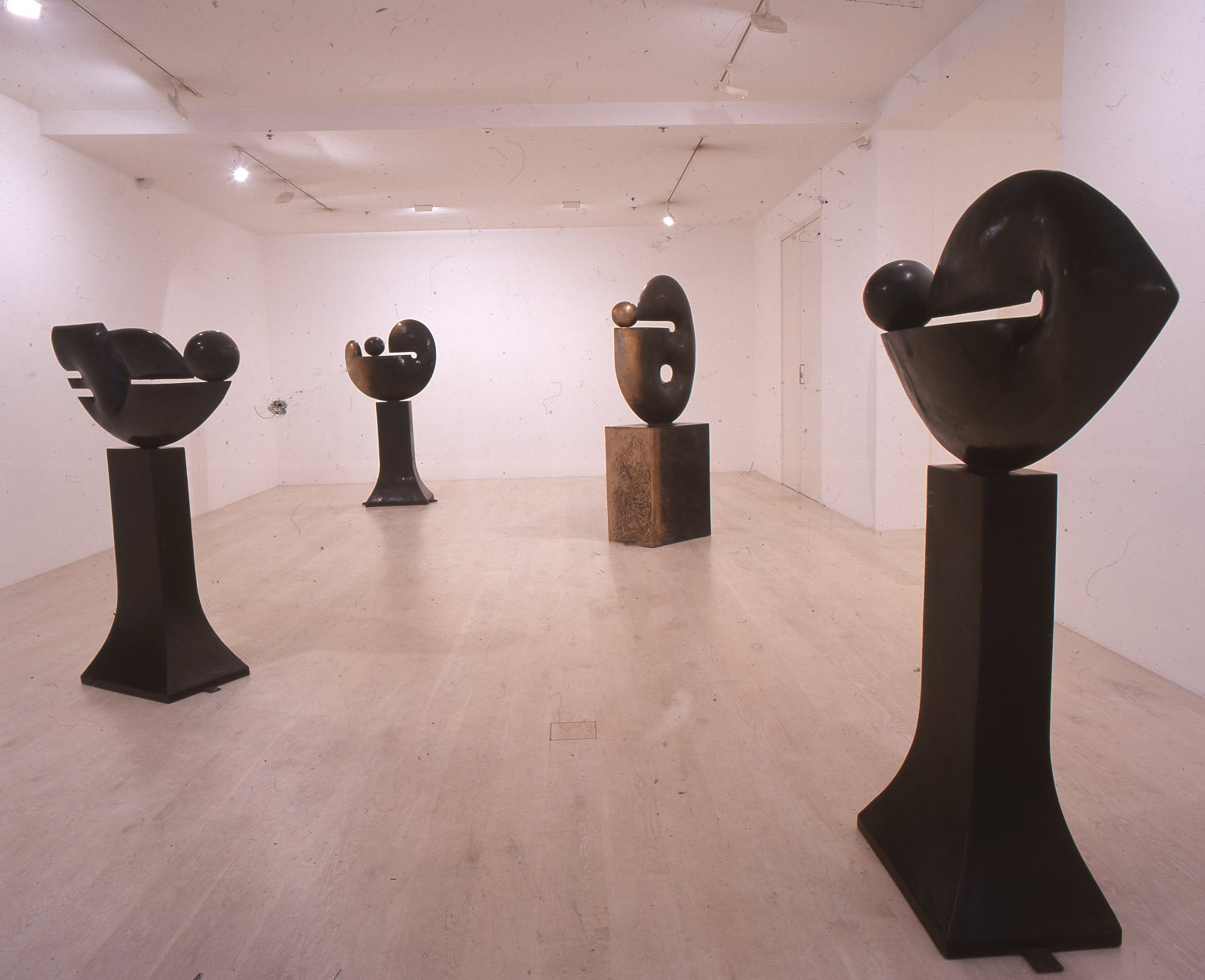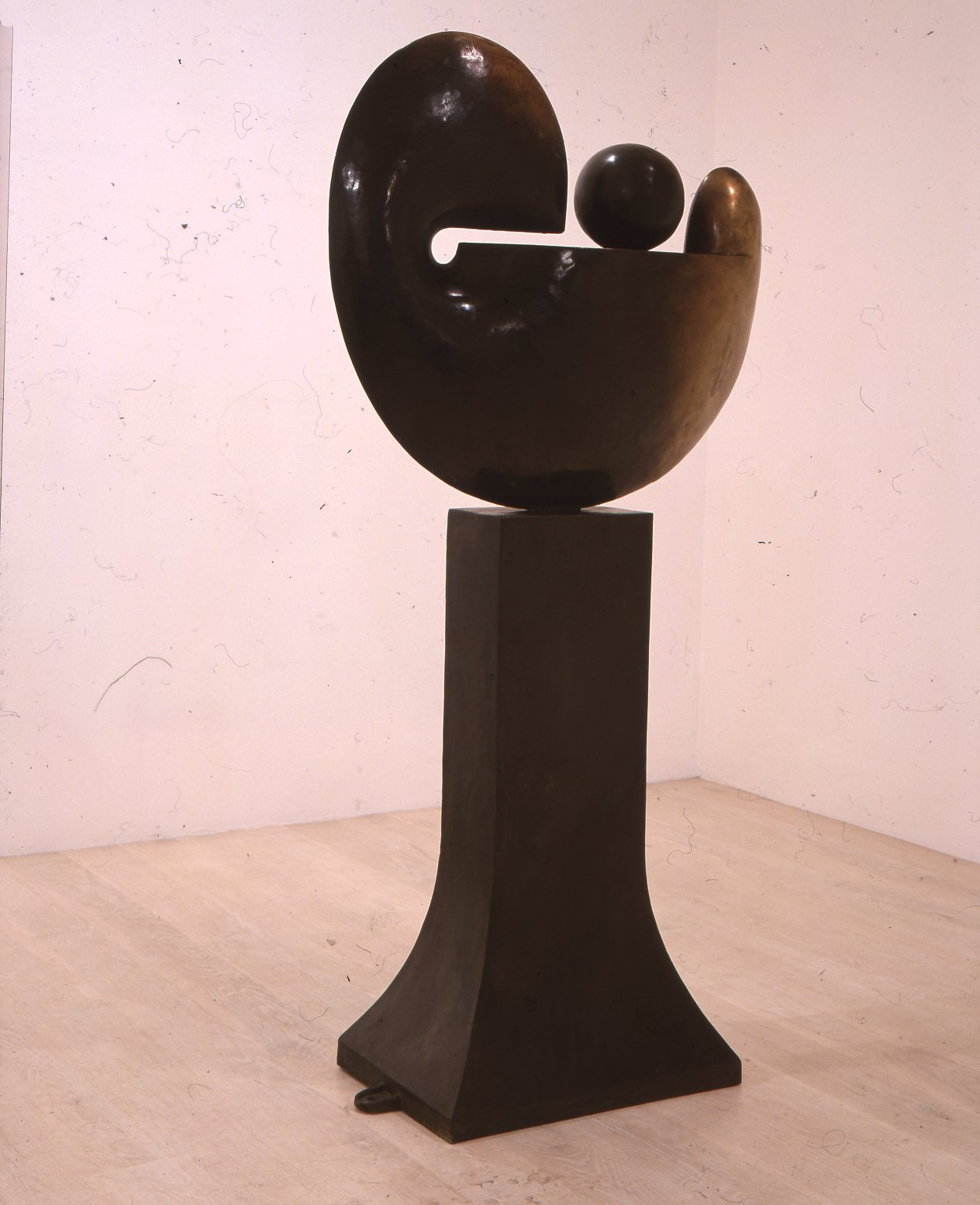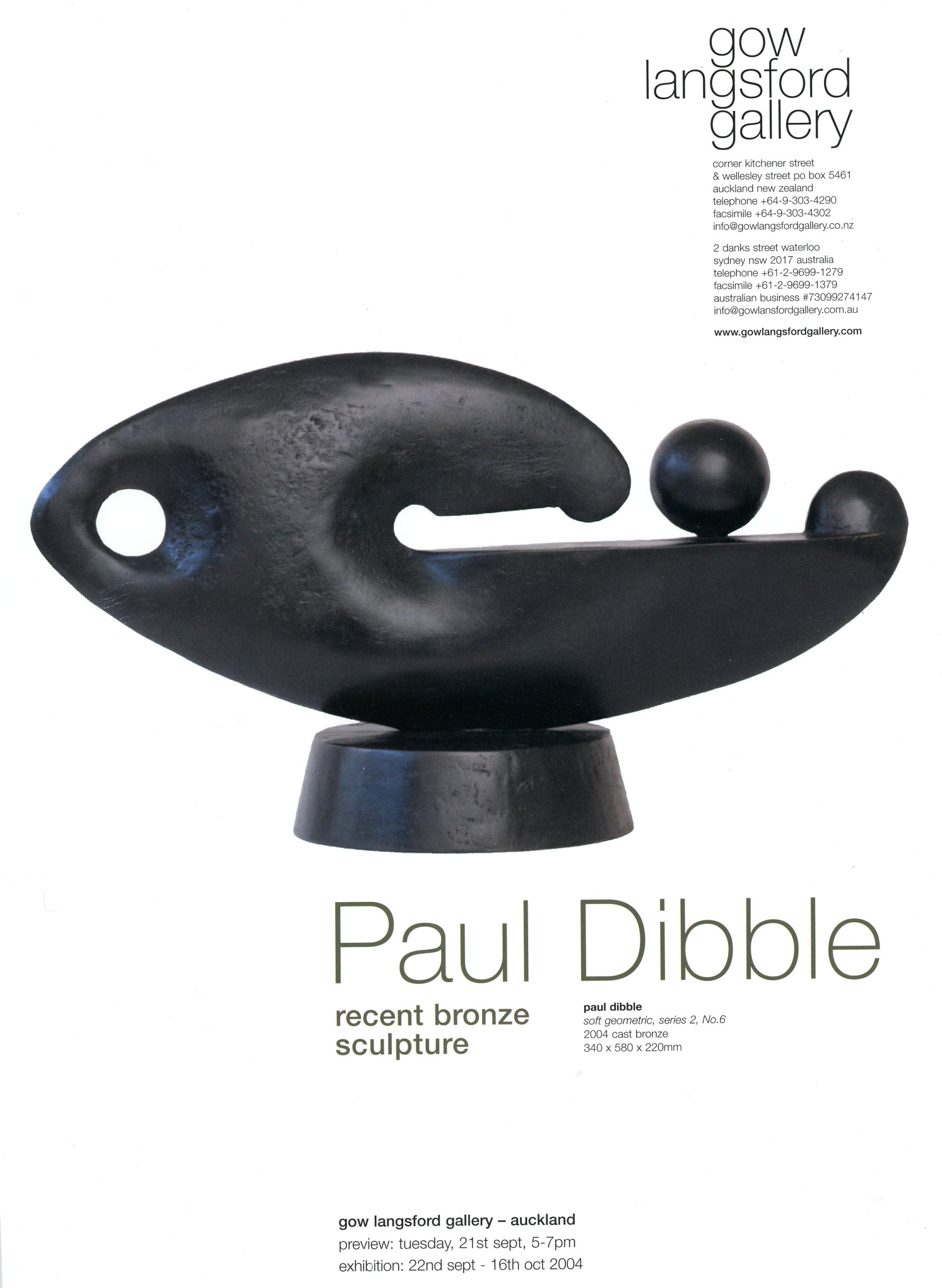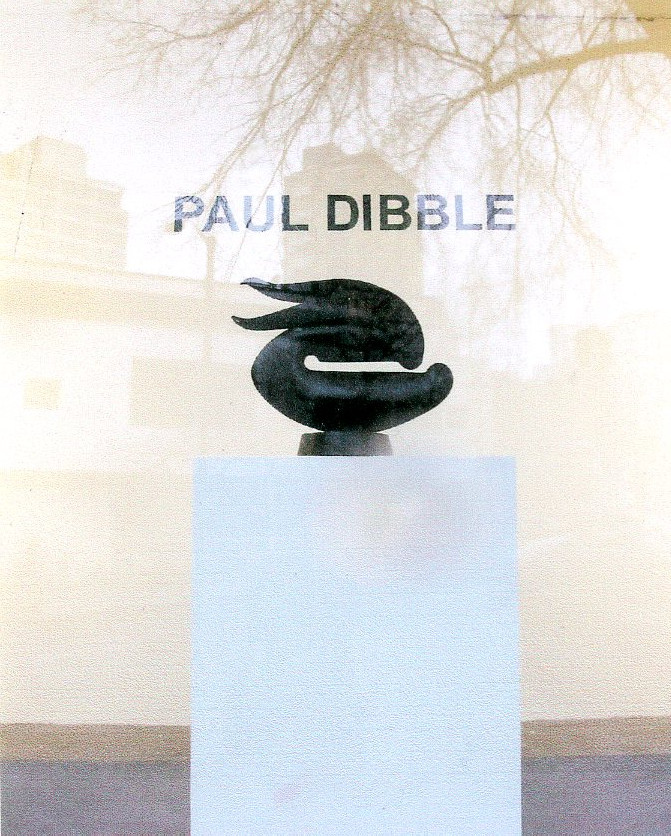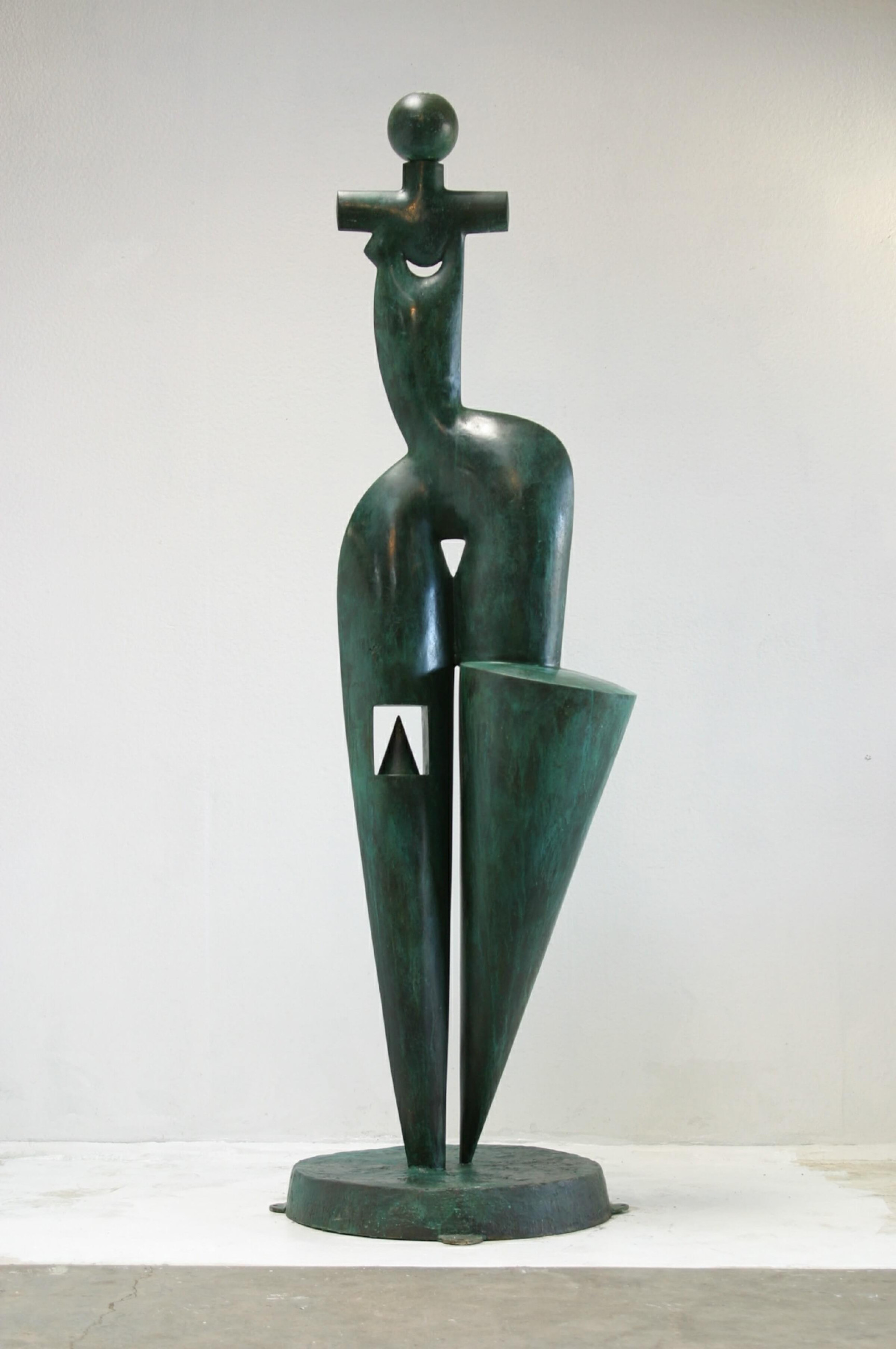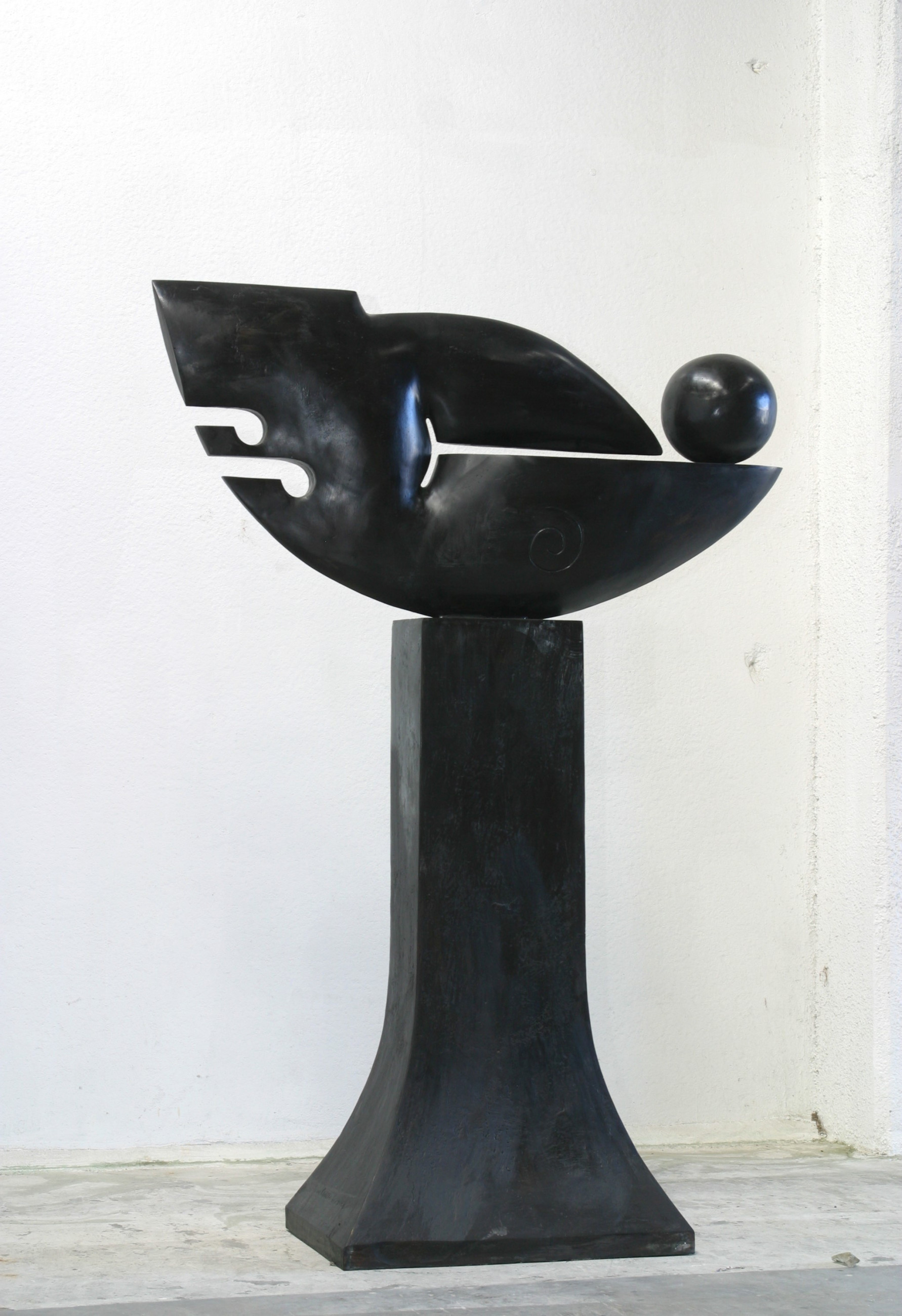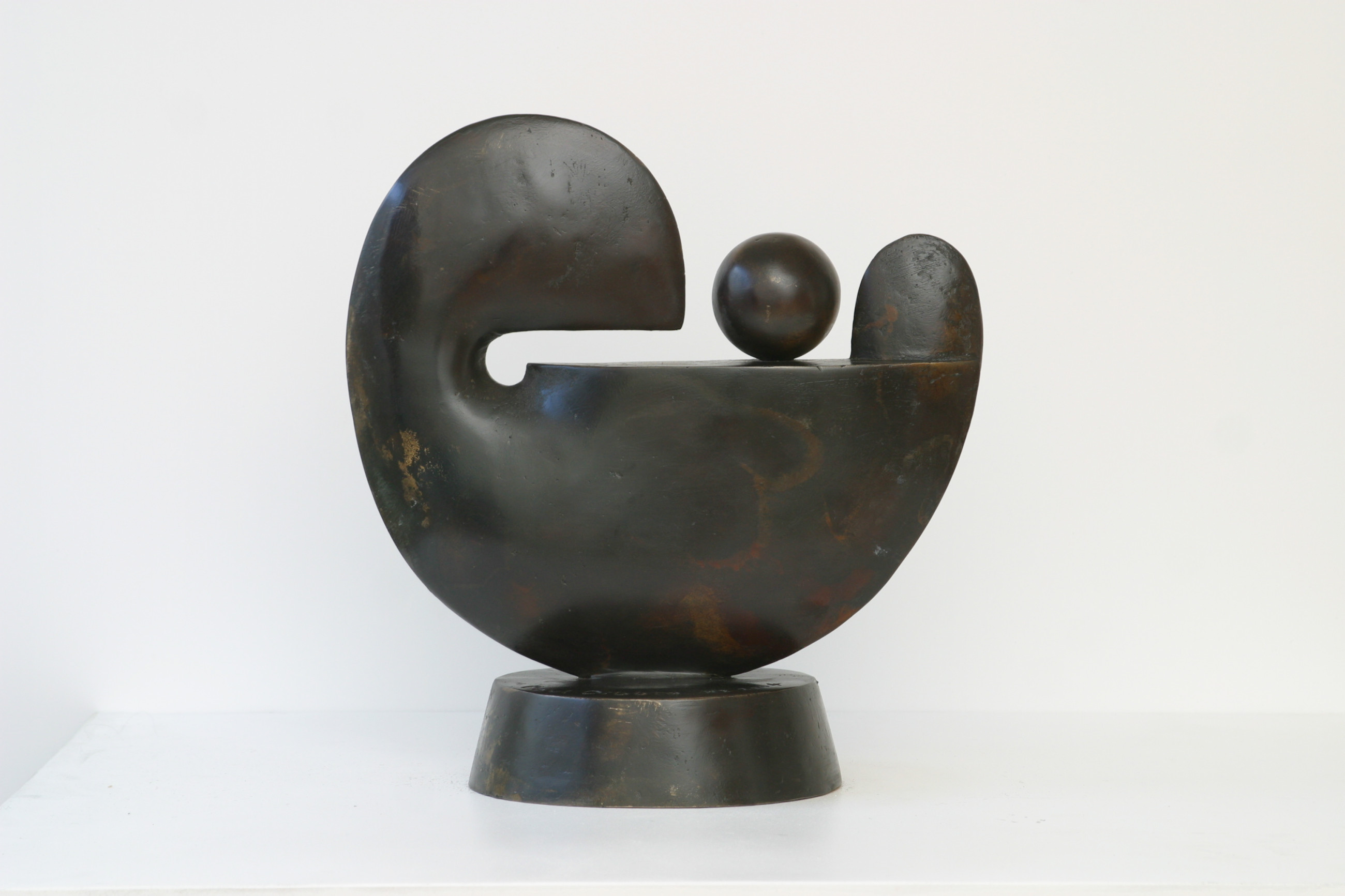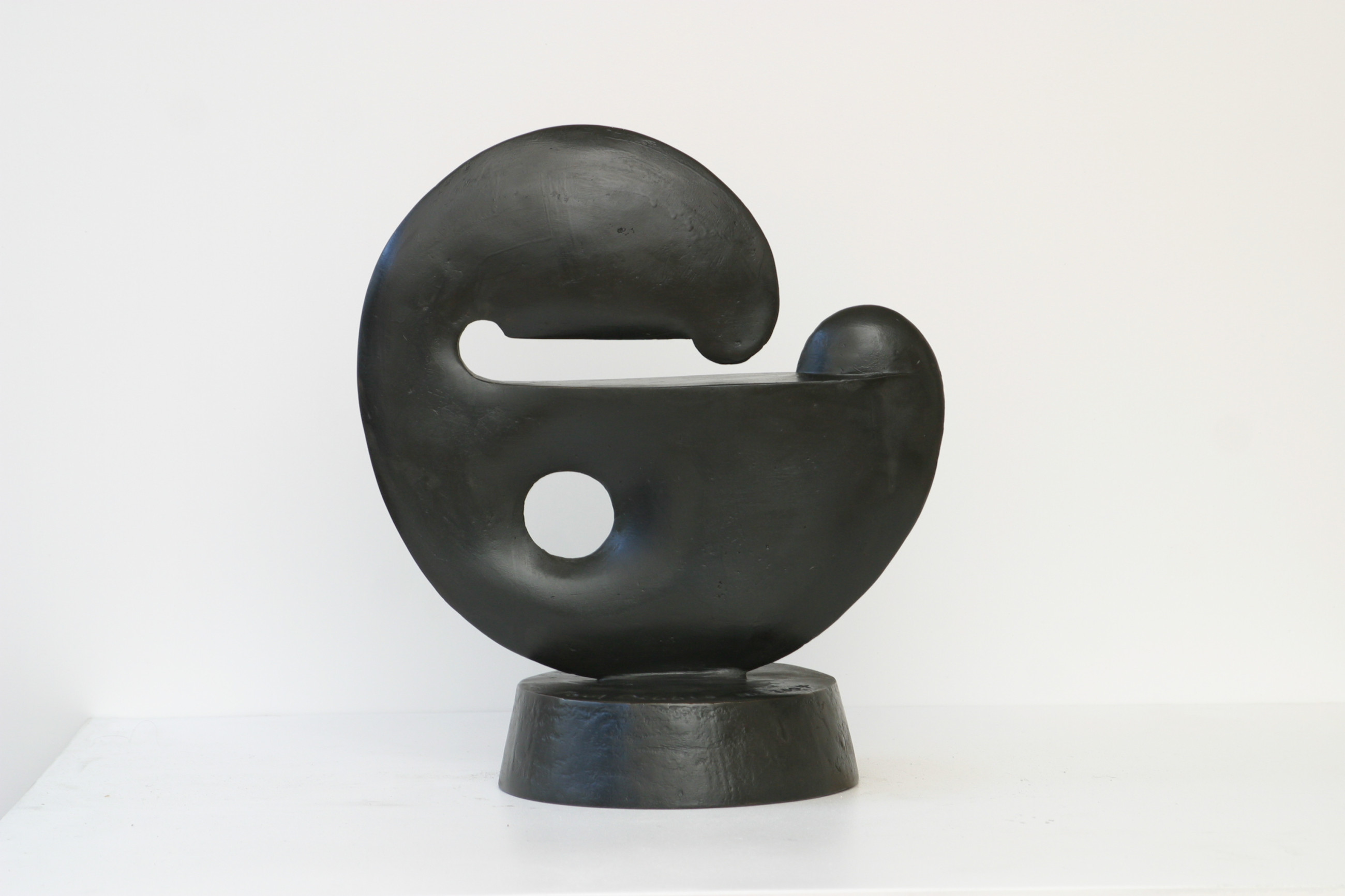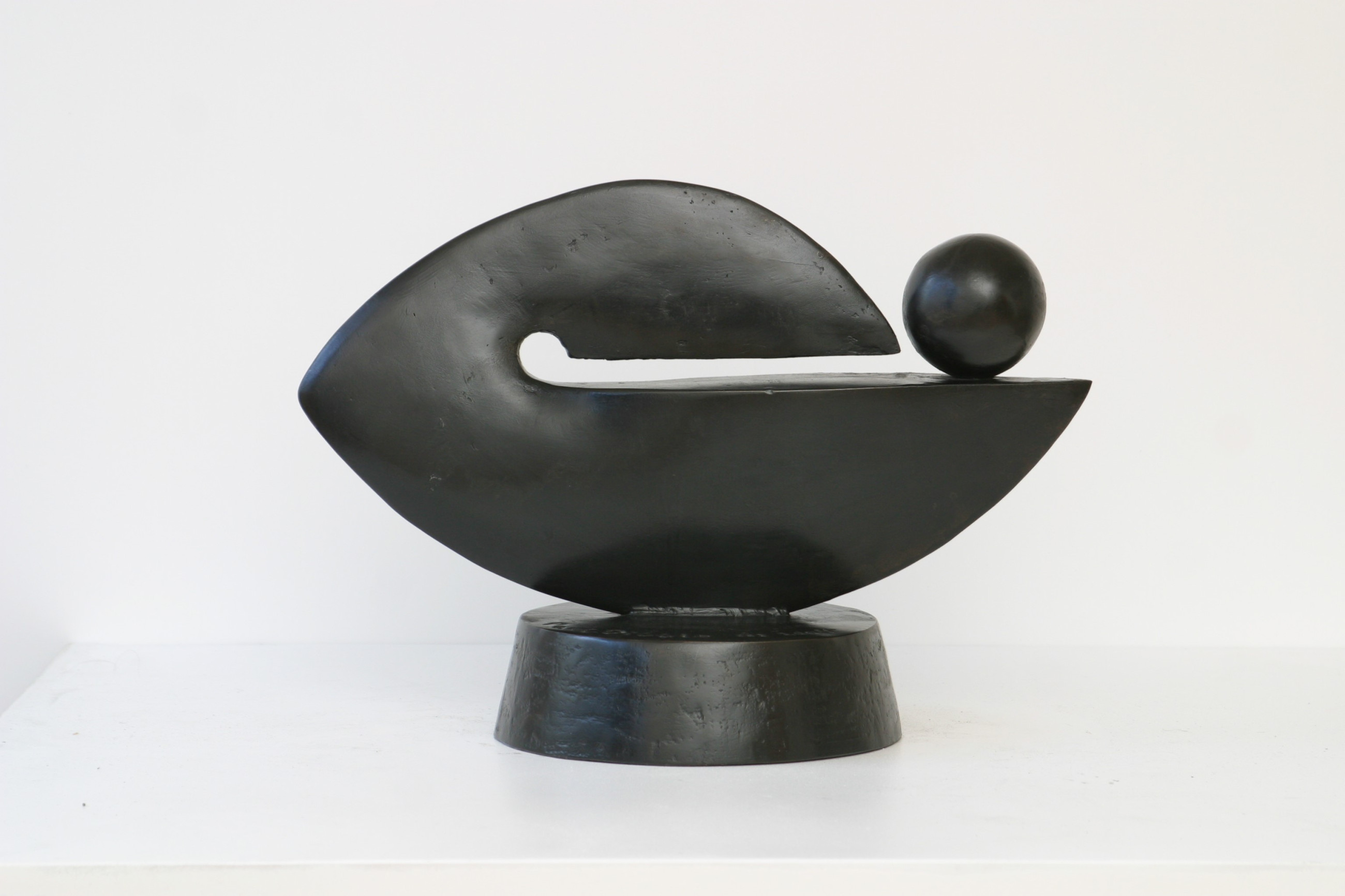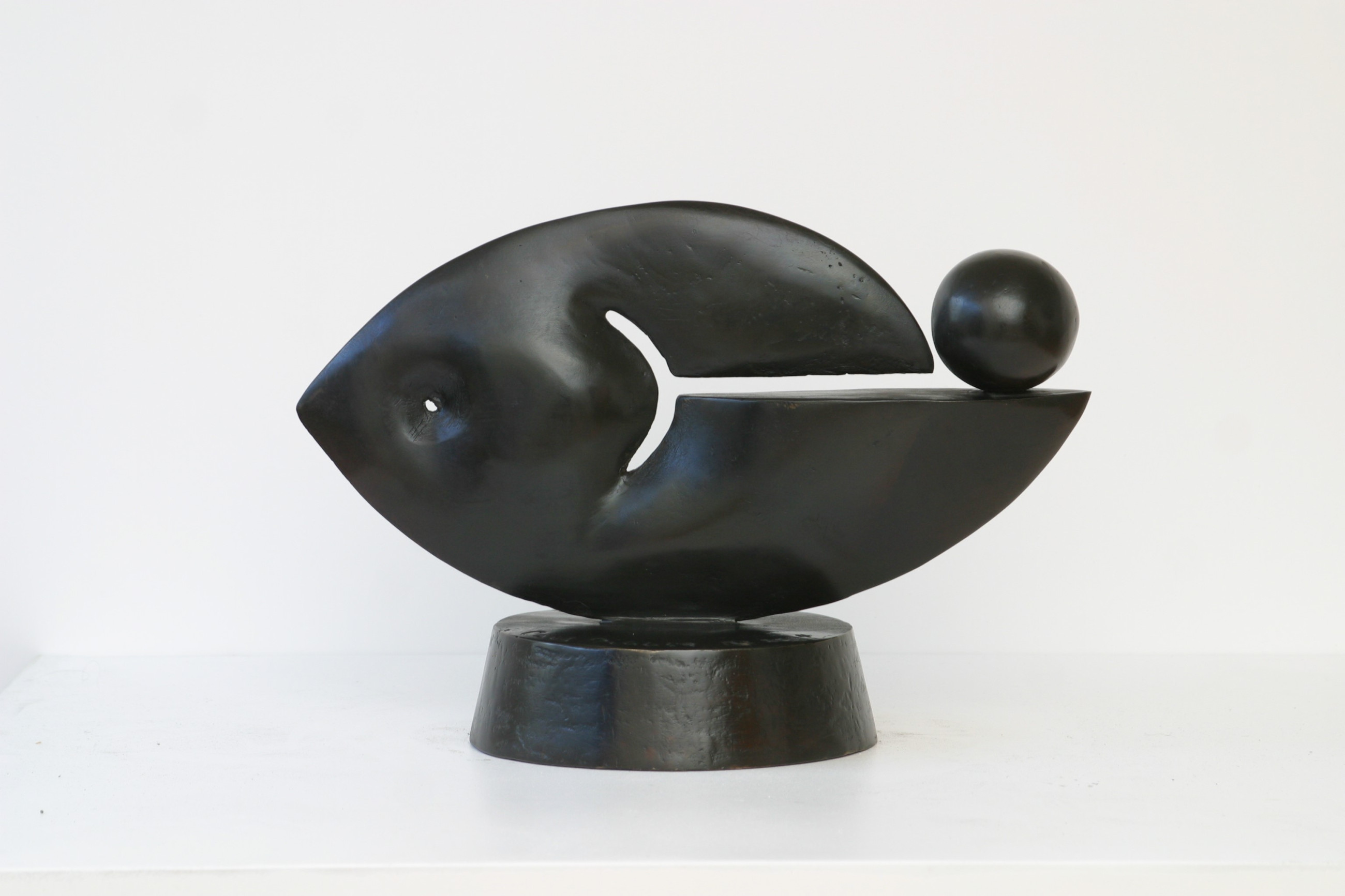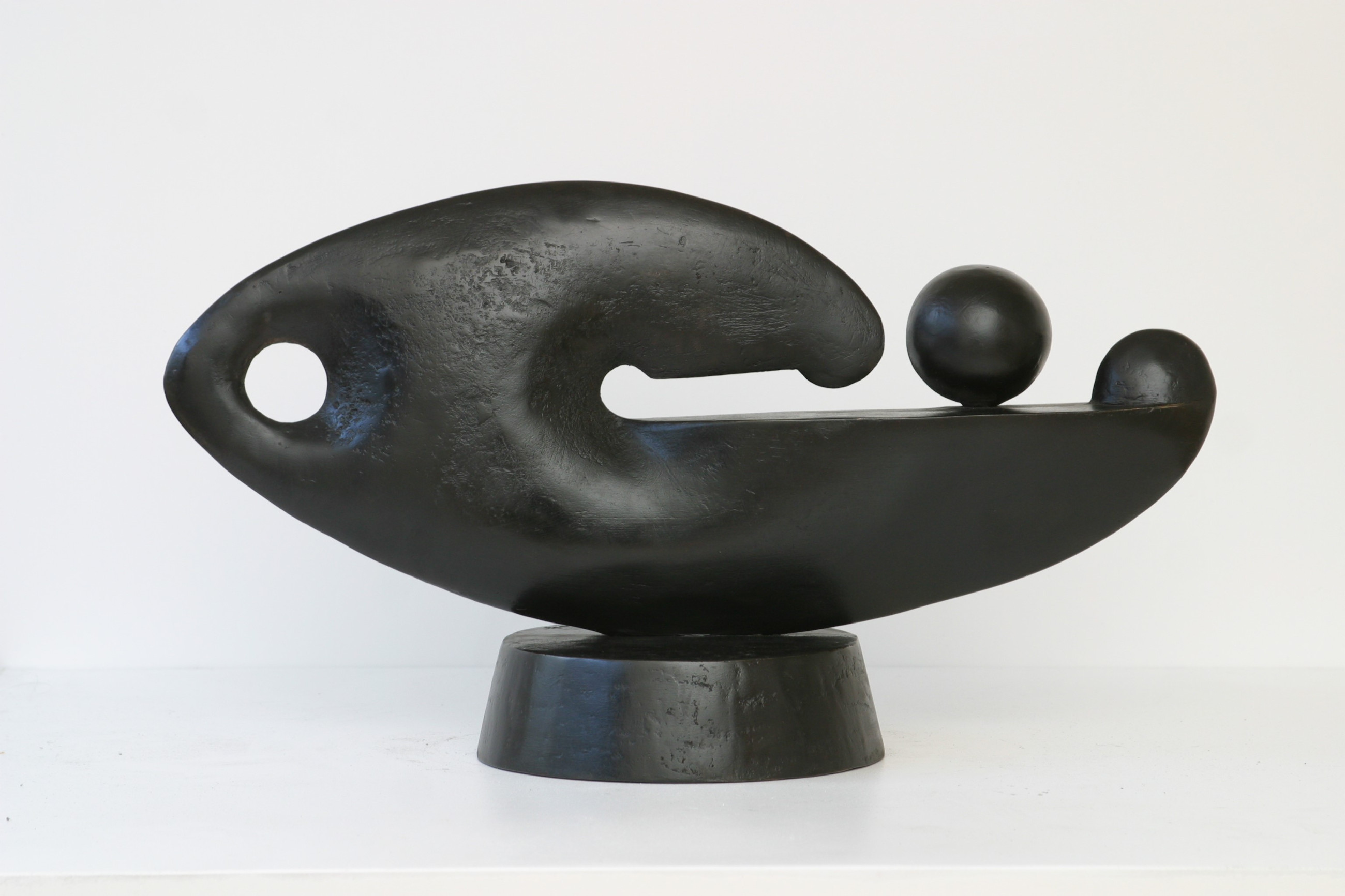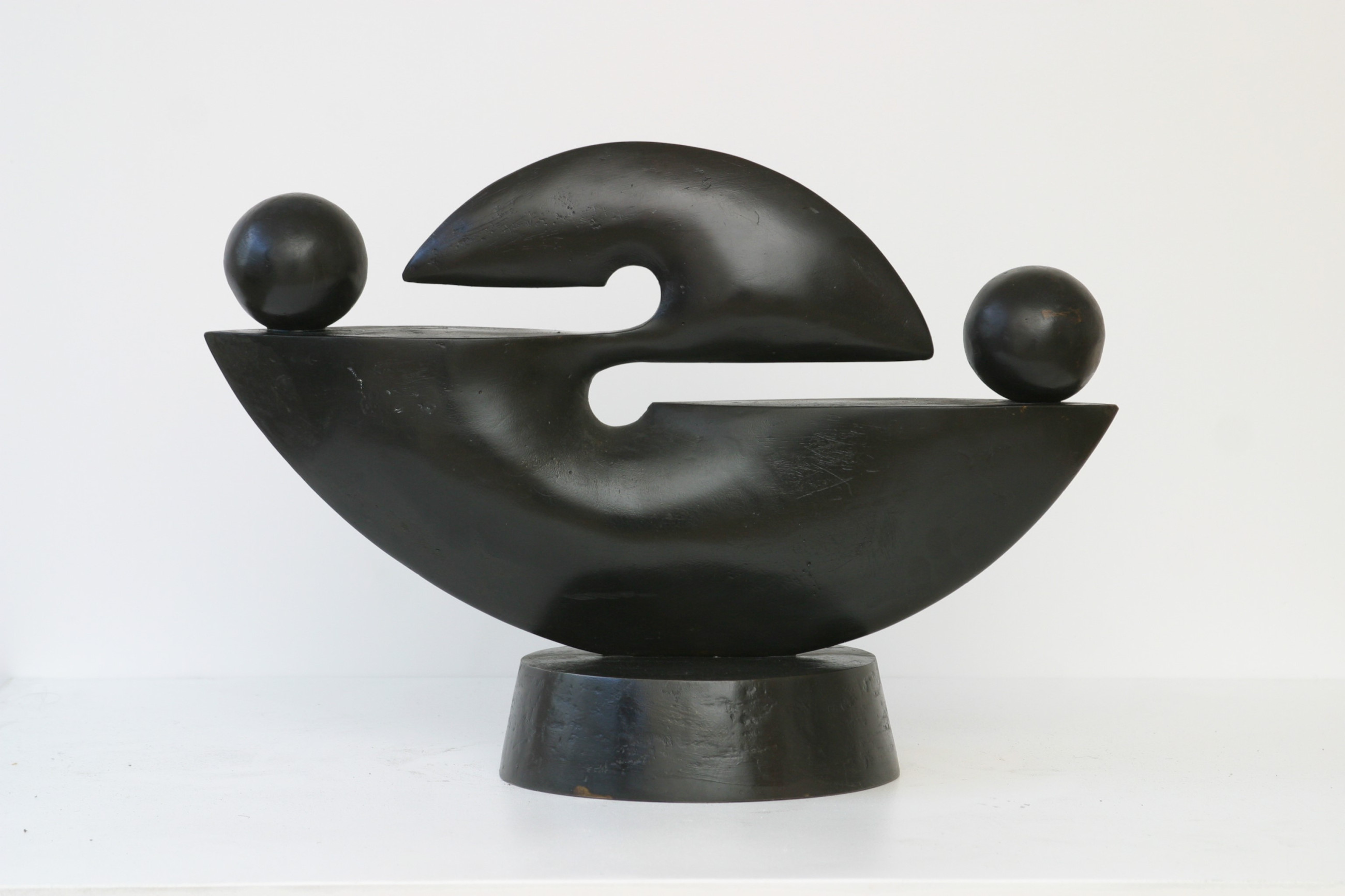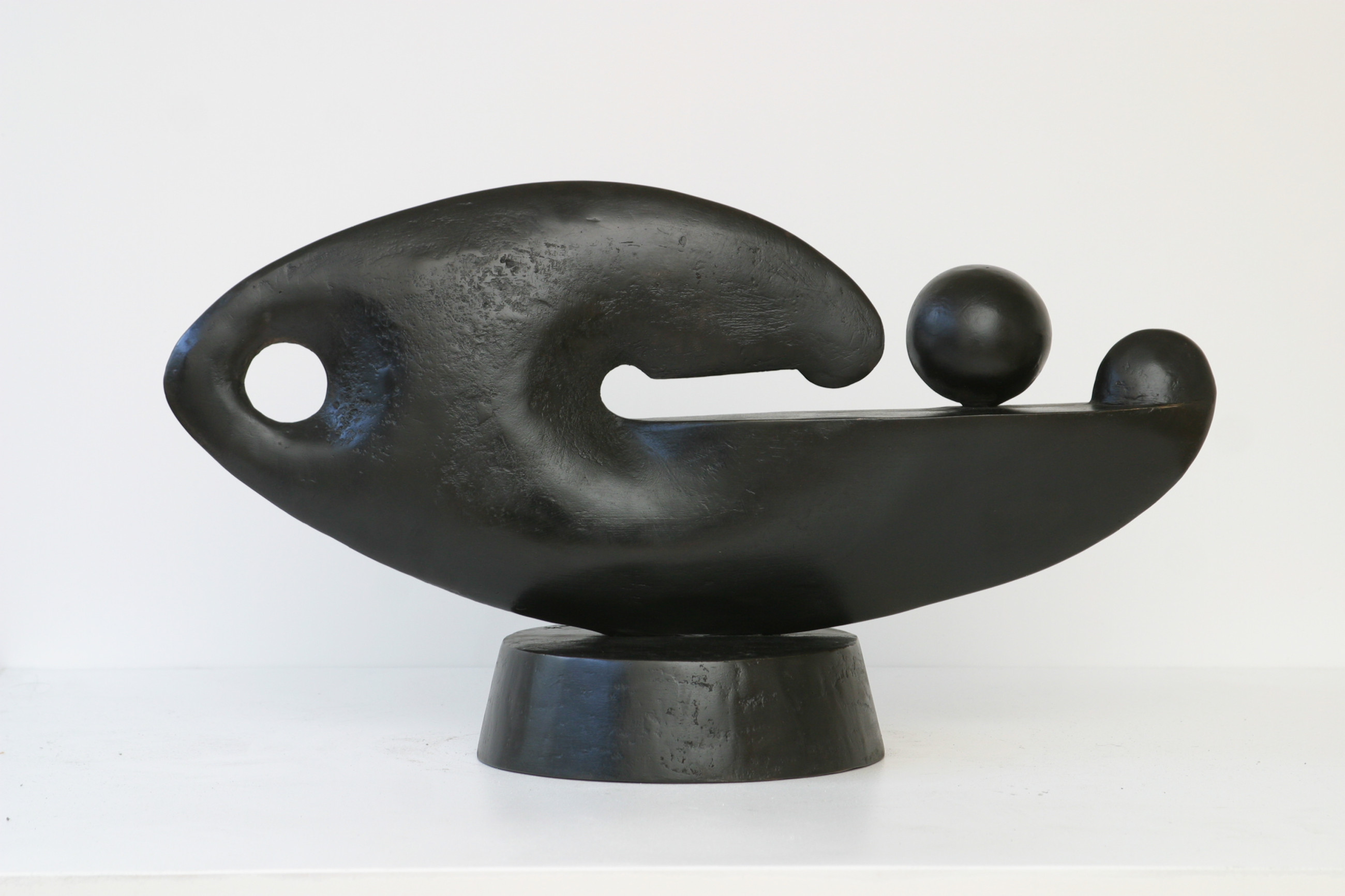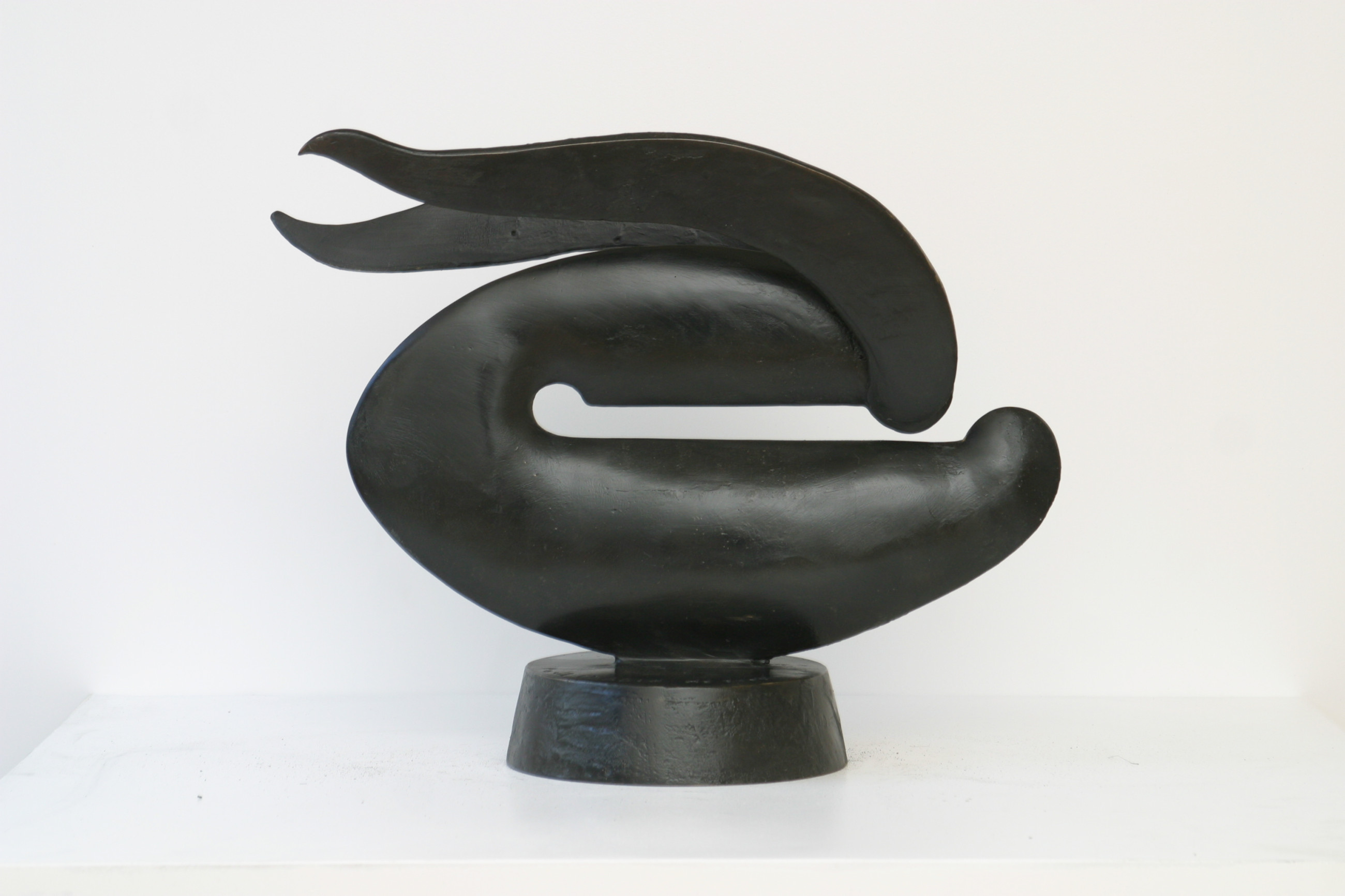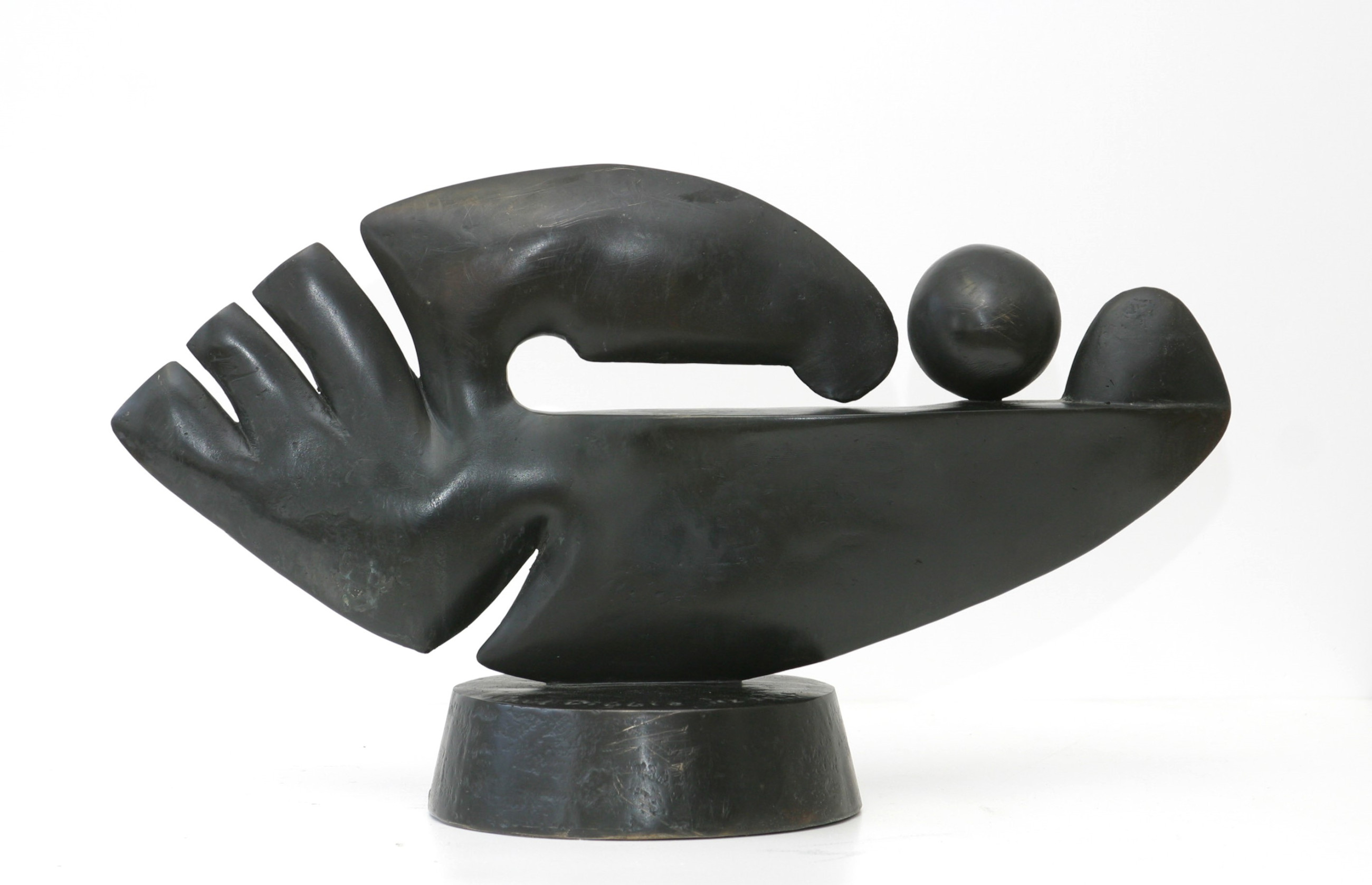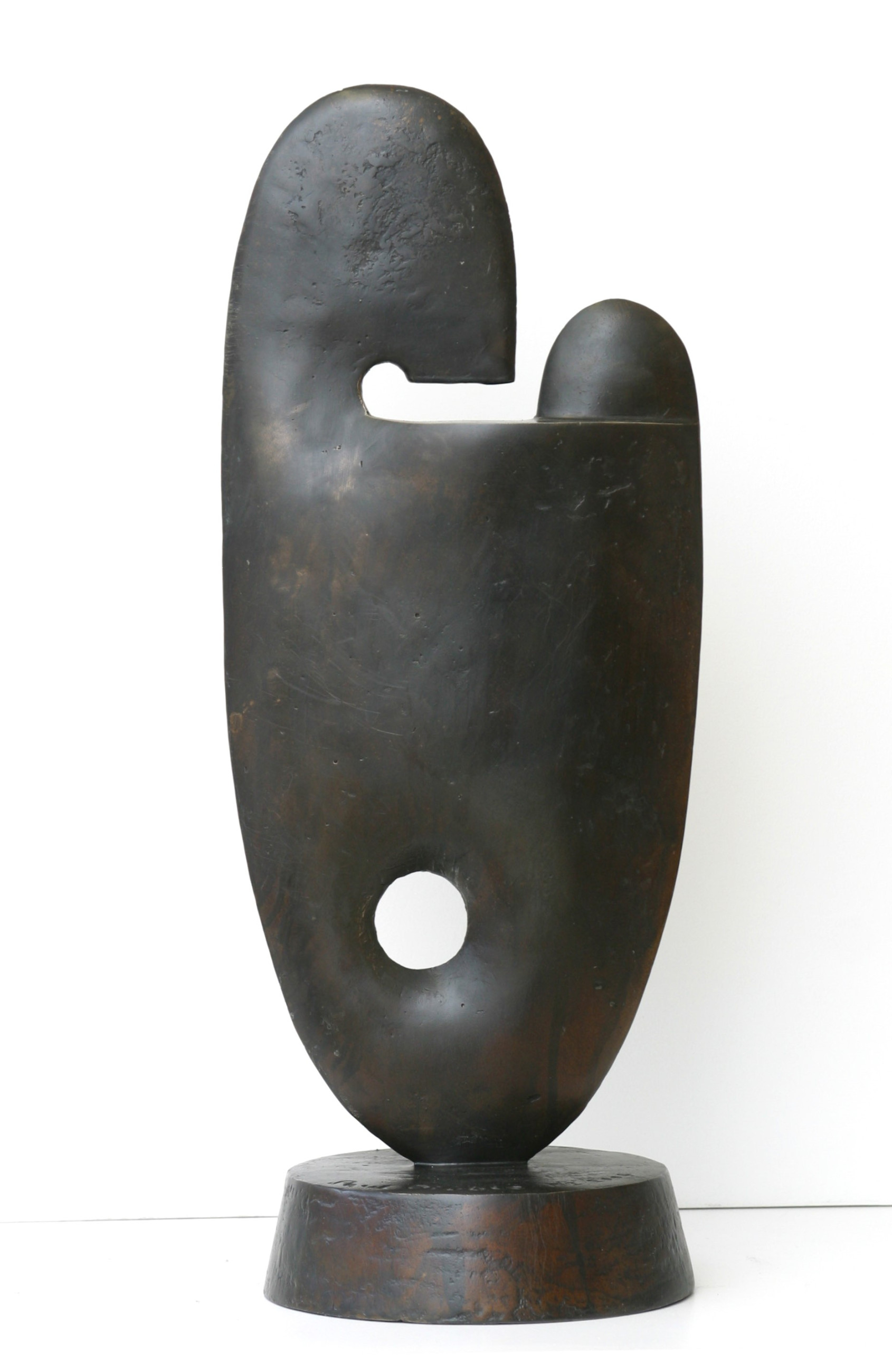September 22 - October 16, 2004 Soft Geometrics
September 22 - October 16, 2004 Soft GeometricsSolo, Gow Langsford Gallery, Auckland
Text
The Soft Geometrics have been on ongoing thread in Dibble’s oeuvre, since their inception in early 2000, forms that he seems to be drawn to and continually reworks and adapts with subtle variations.
The series originally emerged from the “harder” geometric studies (figures based on standard mathematical shapes like cones and spheres), that predated the newer works by some five years. These new figures are pushed forward into a crouch or bent impossibly back in soft, undulating forms. Legs are tucked under or elbows stretched up luxuriously – again in utterly human repose. In some of the forms we have to look hard to find the anatomy, searching the geography for breasts, groin, the sphere of a head, and lengths that could be legs or arms. The shape is sensuously swollen, curvaceous; they resemble bread dough puffed up after its second rise, then curled into egg-like forms.
The works are not based solely on form but also strongly on Dibble’s characteristic use of negative shapes, which are as integral to the composition as the positive masses. Reminiscent of the kowhaiwhai patterns in the Māori meeting house, they play out their own formal games; one curve juxtaposes against another, contrasting or mimicking it in twists and turns. These cut-out shapes are in the spiral forms of koru, and the various lines are as expressive as if drawn by a brush. They effectively lighten the sculpture, pulling the eye from the three-dimensional mass to make it appear as a silhouette. And the massive shapes are really just trickery - at first they appear to have great volume, but the viewer is being fooled. At the edge they taper to nothing, as in the bas-relief carving on the prow of a waka (canoe) or on Māori ancestral figures.
